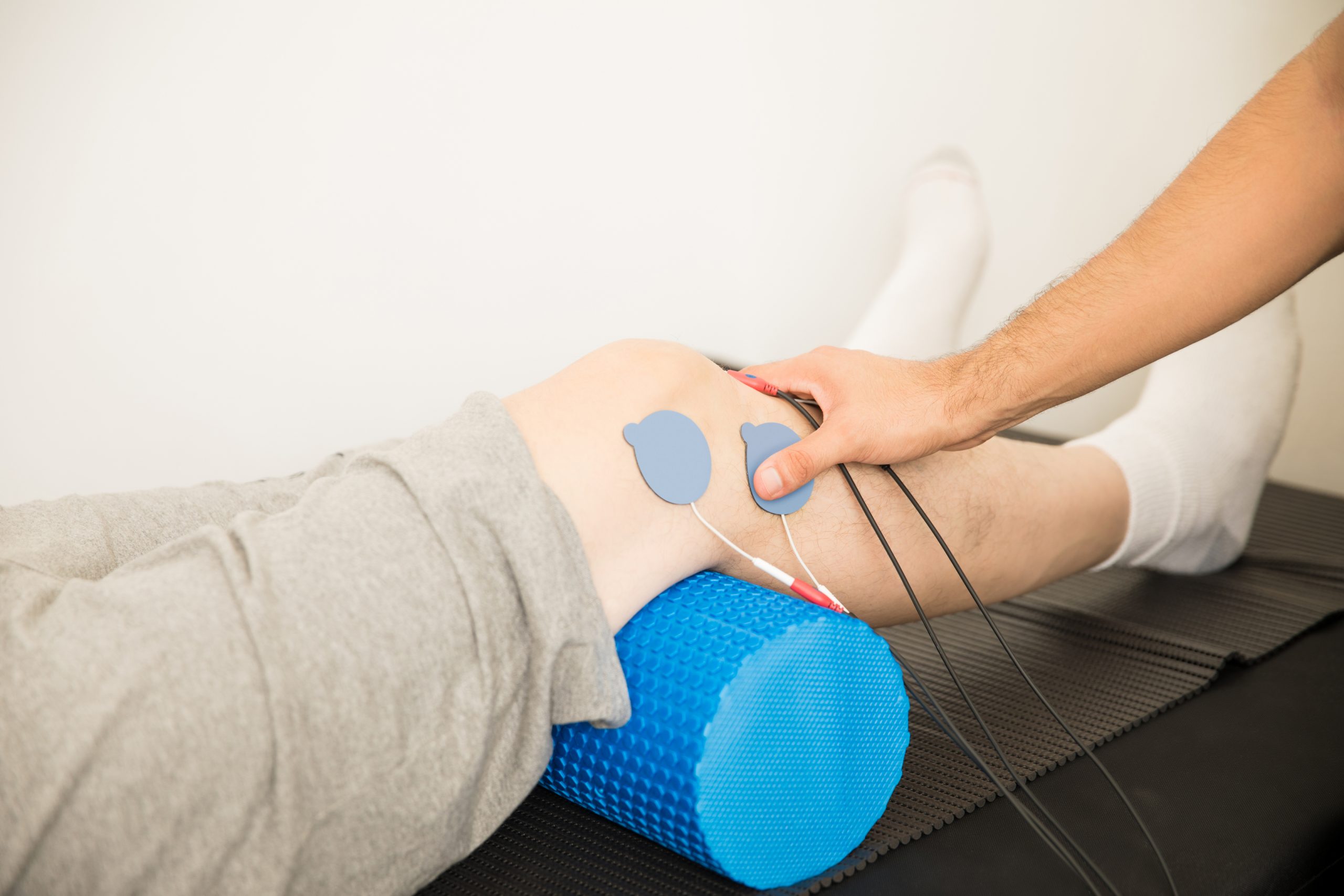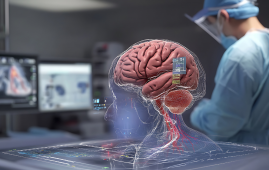

According to a new review paper co-authored by two Johns Hopkins pain experts, scrambler therapy, a noninvasive pain treatment, can provide significant relief for approximately 80%-90% of chronic pain patients, and it may be more effective than another noninvasive therapy, transcutaneous electrical nerve stimulation (TENS). The study was published online in The New England Journal of Medicine on July 13.
Scrambler therapy, which was approved by the FDA in 2009, delivers electrical stimulation via the skin via electrodes inserted in parts of the body above and below where chronic pain is felt. According to Thomas Smith, M.D., the Harry J. Duffey Family Professor of Palliative Medicine at the Johns Hopkins Kimmel Cancer Center and a professor of oncology and medicine at the Johns Hopkins University School of Medicine, the goal is to capture the nerve endings and replace signals from the area experiencing pain with signals from adjacent areas experiencing no pain, thereby “scrambling” the pain signals sent to the brain.
According to Smith, who is also the director of palliative medicine at Johns Hopkins Medicine, all chronic pain and almost all nerve and neuropathic pain are caused by two things: pain impulses from damaged nerves that send a constant barrage up to pain centers in the brain, and the failure of inhibitory cells to block those impulses and prevent them from becoming chronic.
“If you can block the ascending pain impulses and enhance the inhibitory system, you can potentially reset the brain so it doesn’t feel chronic pain nearly as badly,” Smith says. “It’s like pressing Control-Alt-Delete about a billion times.”
Many patients “get really substantial relief that can often be permanent,” he says. They receive from three to 12 half-hour sessions.
As a physician who treats chronic pain, Smith says, “Scrambler therapy is the most exciting development I have seen in years — it’s effective, it’s noninvasive, it reduces opioid use substantially and it can be permanent.”
TENS therapy uses a pair of electrodes at the areas of discomfort to provide low-intensity electrical signals through the skin. According to Smith, pain alleviation frequently vanishes immediately or shortly after the electrical impulses are switched off. In a study included in the review report, the authors identified a nonstatistically significant difference in pain reduction between TENS and a placebo technique in 381 randomized clinical trials.
more recommended stories
 Coffee and Cognitive Function: Evidence Review
Coffee and Cognitive Function: Evidence ReviewA new narrative review in Cureus.
 AI in Emergency Medicine and Clinician Decision Accuracy
AI in Emergency Medicine and Clinician Decision AccuracyEmergency teams rely on rapid, accurate.
 Colorectal Cancer Screening Rates Low in Adults 45–49
Colorectal Cancer Screening Rates Low in Adults 45–49Recent UCLA research reveals that colorectal.
 Gut Immune Cells and Long-Lasting Antiviral Protection.
Gut Immune Cells and Long-Lasting Antiviral Protection.Breakthrough Findings on How Gut Immune.
 Mild Pancreatic Duct Dilatation Signals Higher Cancer Risk
Mild Pancreatic Duct Dilatation Signals Higher Cancer RiskEarly Structural Changes Offer Critical Clues.
 How the Uterus Senses Force During Labor: New Insights
How the Uterus Senses Force During Labor: New InsightsA new study published in Science.
 Fat-Free Mass and Brain Outcomes in Preterm Babies
Fat-Free Mass and Brain Outcomes in Preterm BabiesEarly Fat-Free Mass May Hold the.
 How Hormones Shape Dopamine-Driven Learning
How Hormones Shape Dopamine-Driven LearningNYU Study on Hormones and Cognitive.
 Protein Pair Guides Chromosome Alignment in Mitosis
Protein Pair Guides Chromosome Alignment in MitosisKey Points A joint research team.
 Intensive mind-body retreat rapidly alters brain function
Intensive mind-body retreat rapidly alters brain functionAn intensive mind-body retreat combining meditation,.

Leave a Comment